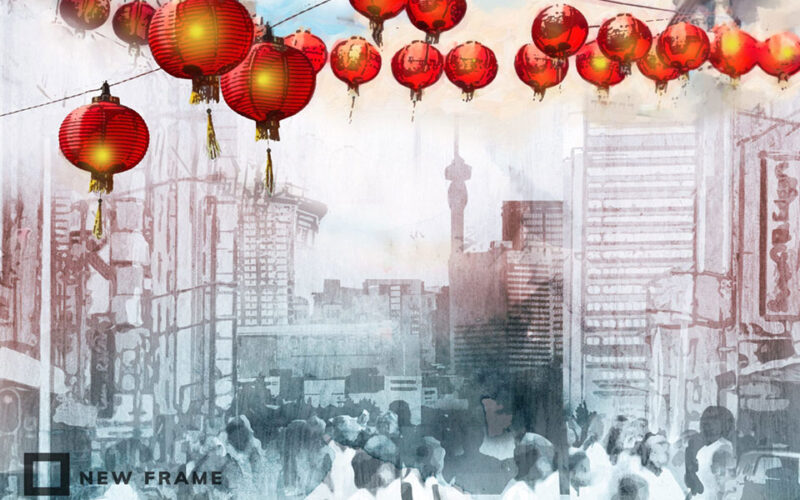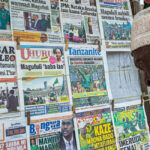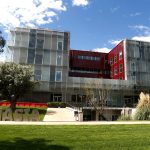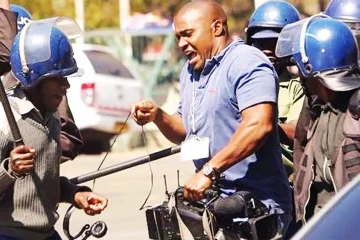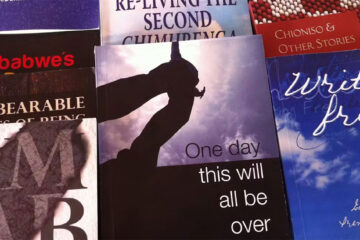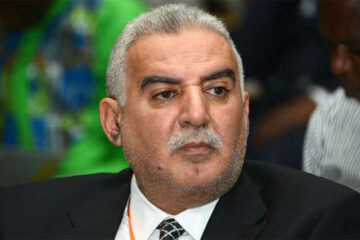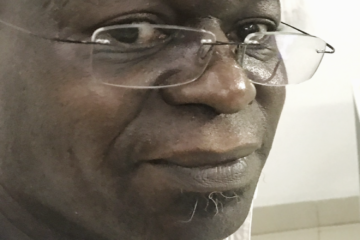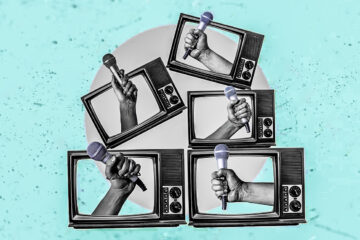IN “Seven Centuries of Slander”, an essay in the current issue of The New York Review, Sarah Lipton reviews two significant new books on the history of anti-Semitism. She concludes that they offer the same lesson: “The well of gullibility has to be primed through frequent repetition, especially with the backing of seemingly authoritative sources.”
This places a particular responsibility on socially authorised forms of making public meaning, in particular those that, like the media and the academy, present themselves as operating in the public interest.
In South Africa, journalism, like the academy, is frequently animated by a strong sense of its own virtue. Both professions often claim to make meaning for wider society from an elevated position outside of the everyday ignorance and prejudice of society.
There are people who approach this work as a vocation rather than a career. There is courage, tenacity, brilliance and flair. There has been and will continue to be work of extraordinary import, and work that while not given much notice, performs the essential day-to-day labour that keeps the public sphere in motion.
But there is a difference between taking on the responsibilities of a public vocation and collapsing into narcissism, which is always a form of blindness. Those of us who are given or assume the right to make public meaning through socially authorised institutions always need to be mindful of our limits, and those of the organisations and institutions in and through which we work.
All academic work and journalism emerges from within particular social contexts and, across space and time, is most often an expression of the dominant ideas in those contexts, including their prejudices and ignorance. This is often masked to some degree in publications of high standing, but in many countries, right-wing tabloids are unashamed to explicitly spew rank hatred. British newspapers The Guardian and the Daily Mail are both deeply invested in the idea of Western superiority, but they express it in very different ways.
Great writers and thinkers move beyond the constraints of their socialisation, opening new vistas of thought and perception. And from time to time, specific publications have golden periods in which they do the same. But these are the exceptions.
Factual errors
In South Africa, the public sphere has particular weaknesses. A record of public dishonesty, or even participation in wild conspiracy theory, is not always a barrier to access to the appearance of academic and journalistic credibility. Anyone personally familiar with matters that receive academic and media attention will know that articles without multiple errors of fact are rare. In the media, the first few lines of Wikipedia entries appear in articles with dispiriting regularity. In the academy, peer review often means little more than that two people with similar assumptions and prejudices to the author have read a piece before publication.
But the weaknesses of our public sphere go beyond a systemic lack of seriousness with regard to empirical rigour. The enduringly colonial structure of our society means that race and class intersect in a way that produces a systemic disregard for the full and equal humanity of impoverished Black people. This is the point at which our authorised institutions for making public meaning most consistently fail to adhere to credible ethical and empirical standards. It is, therefore, both striking and revealing that the code of ethics adopted by the Press Council asserts that the right to free expression is not extended to advocating hatred on the grounds of “race, ethnicity, gender or religion”, but says nothing at all about class.
It is also telling that there is no mention of xenophobia, a form of prejudice that is often rank in our media. People with South African citizenship are habitually referred to as “foreign nationals”, and criminal conduct is frequently described in terms of nationality when it is carried out by people not deemed to be South African.
The dominant assumptions in a society, or more specifically in the middle-class space from within which journalists and academics work, carry real weight. It is not easy to consistently operate independently of the gravity of that weight. When New Frame launched a little over three years ago, we set high standards for ourselves, and talented and committed people have invested huge intellectual and professional energy in working to ensure that we meet those standards.
But there are areas in which the weight of certain kinds of social consensus drag us away from what is ethical and empirically credible. One example is that we have sometimes struggled to engender sufficient critical distance from the drive to misrepresent complex social problems in the crude and reductive language of criminality.
We once published an article on the heroin epidemic that presented addiction, a way of coping with profound pain, in terms of personal criminality rather than social crisis. We have even repeated the ridiculous and profoundly anti-impoverished claim that whoonga and nyaope are made, in part, from antiretroviral medication. We published an article that, eliding the social context, implicitly ascribed the July riots to an outbreak of mass criminality.
Recently, we caught a telling error in an article before it went to print. The article dealt with American military bases in Africa. It made no mention of China having a military presence on the continent. The wider facts are that the United States has 30 bases in Africa (32, if a more expansive definition of a base is used) while China has one. Yet the blurb for the article read: “The military presence of the US on the continent is second only to China.” If Sigmund Freud was correct about errors in speech sometimes having unconscious roots, this error in writing may perhaps be an unconscious expression of a world view.
We published a piece in 2020 on the Covid-19 lockdown in Wuhan that, following the language of Donald Trump’s more deranged supporters, referred to China as “the beast from the East”, a reference to the demonic beast in Revelations. It situated the writer, and our audience, as the “West” with China as a fundamentally alien presence. It carried noxious stereotypes about Chinese people familiar to anyone who grew up reading English children’s fiction such as the Biggles novels.
When we have caught slips, we have swiftly corrected them, sought to reflect on them and strategised about how to avoid making them again. But the fact is that we made these mistakes.
A Sinophobic turn
Crude Sinophobia has been a standard feature of much of the Western press in recent years, and much of the media across Africa too. Paranoia about the “yellow peril” has a long history in Europe and its settler colonies, including South Africa. It has ebbed and flowed over the years, but rapidly escalated when Covid-19 was first identified in Wuhan. Trump infamously gave a virus a national character, referring to “kung flu” and the “China virus”. Newspapers in Australia and Canada ran headlines shrieking about the “yellow peril”. People identified as Chinese were subject to discrimination and street violence, something that continues even in a city as cosmopolitan as New York.
As Joe Biden persists with the new Cold War between the US and China begun by Trump, Sinophobia is escalating, marked by increasing violence in the US against people identified as Chinese. In countries such as Ghana and the Democratic Republic of Congo, media coverage of corporate labour and environmental abuses has given capital a national character in a way that is not done with, say, Australian or Canadian firms, resulting in intense hostility to people identified as Chinese.
The South African media has also taken an increasingly Sinophobic turn. This is not a new development. John Matshikiza wrote a profoundly prejudicial article in the Mail & Guardian in 2007, warning the newspaper’s readers to be “terrified” and “scared” of “hard-core Chinese” migrants.
Online publication News24 published an article on 1 September said to be based on a leaked report from the State Security Agency (SSA), stating that there was a “high likelihood” that ANC member of Parliament Xiaomei Havard was spying for the Chinese state. The SSA moved rapidly to rubbish the report, with the deputy minister of security saying that there are actors “who are deliberately and intensely peddling false information through disinformation and misinformation”. This is something that has happened repeatedly in the past and done serious damage to the reputations of people and institutions, as well as the credibility of the media.
The Independent Panel Report Inquiry into Media Ethics and Credibility, commissioned by the South African National Editors Forum and released in January 2021, was clear that the findings of its investigation into media ethics provided “important lessons to be learned about the strengths and weaknesses of SA media”. It noted that this included “uncritical repetition of agendas, perpetuating concepts without interrogating them, lack of nuance, very limited search for and understanding of complexity, and lack of engagement with subtexts”.
In a context in which the media have repeatedly been played by “reports” and “dossiers”, as well as anonymous “open letters” and so on, it should always be understood that “leaks” of this nature are highly likely to be aimed at shaping media coverage, and highly likely to be empirically incorrect. Great caution should be exercised.
Yet in the News24 article, Havard is presented as “highly likely” to be a spy without any credible evidence provided to support this assertion. The article also carries a clear implication that all Chinese people in South Africa should be suspected of acting as spies. No counter-views are given, and no Chinese South Africans are asked for their views. An entire category of people is slandered. This slander is formally expressed in national terms, but was widely understood in racial terms.
Mistakes happen
It is well known that the US has agents operating around the world, and that its Central Intelligence Agency works through its embassies and organisations such as the United States Agency for International Development (USAid). Yet it is difficult to imagine that a US-born person or current citizen occupying a position in public life in South Africa would be treated the same way as Havard, let alone that all people identified as American would be presented as potential spies. A person with a connection to USAid, as many academics and non-governmental organisation people have, is not assumed to be a spy. It is difficult not to conclude that this double standard is both racial and racist.
Jonathan Shapiro, whose work appears under the Zapiro moniker, published a crudely racist cartoon featuring Havard and titled “Not so secret agent” in online publication the Daily Maverick on 5 September. Havard is a South African citizen and so the image of her emerging from a box emblazoned with the insignia of the Chinese state and a “Made in China” label is simply xenophobic. It, along with the title of the cartoon, suggests agreement with the entirely unsubstantiated claim that she is a spy. Her facial features are drawn in an exaggerated way to make her “Chinese” in a way that is clearly racist. There is also the kind of red-baiting trope that anti-communist cartooning used all the time – we should remember the politics of The Manchurian Candidate film.
The colours of the ANC are black, green and yellow, but in the cartoon it is yellow that overwhelmingly dominates Havard’s dress. Given that referring to people identified as Chinese as “yellow” is widely understood to be a racial designation and a racial slur, this is a gesture that can only be read as racial and racist. In terms of the claim of corruption made in the cartoon, it should not be necessary to say that if Havard is corrupt, and if she did buy a place in Parliament, this would be because she is a corrupt individual and not because she was born in China.
Noting all this is not an exercise in self-righteous finger-pointing. There is no publication, including our own, that does not make mistakes, and that never gives in to the weight of the prejudices of wider society. The point is that we all need to work with humility and care, always trying to be as mindful as we can of the weight of society pushing against our work. And after this week and last, it is clear that we must include the Sinophobia that festers across Africa and Euro-America as one of the issues that requires scrupulous collective reflection as we undertake our work.

